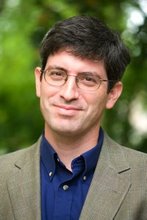
by Shelley Stuart
Of all the scientific disciplines, archaeology depends most on the generosity of others. Not everyone would allow a team of academics onto their property, some wearing shirts declaring “archaeologists will date any old thing.” Not everyone would consent to a dozen strangers searching for bones and bits of pottery on their little island paradise.
Smuttynose Island, a shrub-crowned island in the Gulf of Maine, doesn’t look like your typical island paradise. It’s a scrawny, windswept place, an island that braves the wild winters through sheer obstinacy. The two equally stubborn buildings that still exist on the west side of the island are simple cottages from bygone days. Owned by Stephanie and Nathan Hubbard, these buildings house a rotating roster of Smuttynose Stewards. These volunteers act as docents, and regale the occasional visitor with the island’s juicy history of axe murders, pirate treasure, mysterious graves and ghosts.
The island’s more mundane history lured Nathan Hamilton, an archaeologist from the University of Southern Maine, to Smuttynose for his research. Hamilton wants to know more about the fishing industry that was active during the Colonial years. The Hubbards have a deep interest in the natural history, past ecology and use of Smuttynose so they graciously allowed Hamilton and the nearby Shoals Marine Lab to set up a field school there. In 2009, Hamilton and his team of students began looking for artifacts.
Using six-inch trowels, they carefully excavated a pit the size of a beach towel. Centimeter by centimeter they peeled away layers of earth. Sifting the dirt through fine mesh screens, the team members hunted for artifacts smaller than a green pea. Hamilton obsessively bagged and cataloged hundreds of cod fish bones, fish hooks, pottery pieces and pipe stems.
Hamilton’s artifacts look like Puritan trash at first glance, but to an archaeologist they all hide precious nuggets of information. If Hamilton were like most scientists, he would have hoarded his findings until found the time to analyze and publish his results. But Hamilton is a philanthropist in his own right – he gives knowledge.
As Hamilton puts it, most scientists play things pretty close to the vest. There’s an emphasis of my paper, my data, my artifacts. The result: I have a backlog of work, and you remain in the dark. Hamilton takes a completely different approach. He is as open and sharing with his data as the Hubbards are of their land.
Hamilton took “his” fish bones to Beverly Johnson, an organic geochemist at Bates College. She will analyze the bones to measure how much carbon dioxide was dissolved in the Gulf of Maine in the 17th and 18th centuries. Comparing carbon dioxide levels in old cod bones to the amounts in present-day fish will shed more light on the ongoing question of climate change.
It will take several more years of digging before Hamilton fully understands what Smuttynose looked like in the 1600’s. But the Hubbard’s willingness to grant access to the archaeological treasures beneath their land, and Hamilton’s openness with those same artifacts, will allow scientists from different areas to better understand a small piece of our world.
Sometimes science begins with the heart, not the head.
[Image of Smuttynose by Robin Hadlock Seeley]


No comments:
Post a Comment